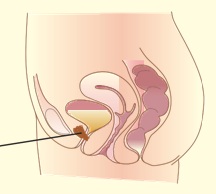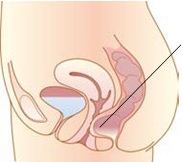
Surgery for female incontinence and prolapse
Incontinence and prolapse mesh
What produces urinary stress incontinence?
Urinary stress incontinence can be the result of lesions or the weakening of the muscles and pelvic ligaments. These structures can become weakened as a result of pregnancy, giving birth, obesity, trauma, past surgical procedures, muscular damage or hormonal changes which can cause the bladder and urethra to relax and fall bellow their normal position. This condition is often referred to as “fallen/dropped” bladder.
Any sudden additional pressure caused by coughing, sneezing, laughing or lifting heavy weights can produce accidental urinary leakage.

How is the subfascial Monarc mesh implanted into the body?
Surgical procedure for the implantation of the subfascial Monarc mesh is carried out under regional or general anesthesia depending on the patients's and doctor's preference. We make two tiny cutaneous incisions near the internal side of the muscle and the pubic bone. Then we insert the mesh through a small incision in the vagina and place it under the urethra fixing it in place under the skin.
The mesh holds the urethra and provides it with a solid point of support and pressure which helps it close more firmly.

PROLAPSES
Minimally invasive surgery
Generally the methods used to correct prolapse are done in hospitalized patients and carried out under general or regional unaesthetic. It is possible for the doctor to repair more than one type of prolapse in the same surgery.
Depending on the type of prolapse the methods Apogee and Perigee will generally follow the steps below:
- Vaginal incision and a few small skin incisions. Depending on the procedure chosen it is possible to make an incision in the inguinal fold or in the middle of the gluteal region (buttock) on both sides.
- The mesh is inserted through an incision and placed inside the body.
- The mesh is attached with sutures.
- The incisions are then closed.
Bladder or cystocele prolapse
This is a condition when the wall of tissue between a woman's bladder and her vagina weakens and allows the bladder to descend into the vagina.

Rectocele
Rectocele occurs when the thin wall of fibrous tissue that separates the rectum from the vagina becomes weakened, resulting in the front wall of the rectum bulging into the vagina.



